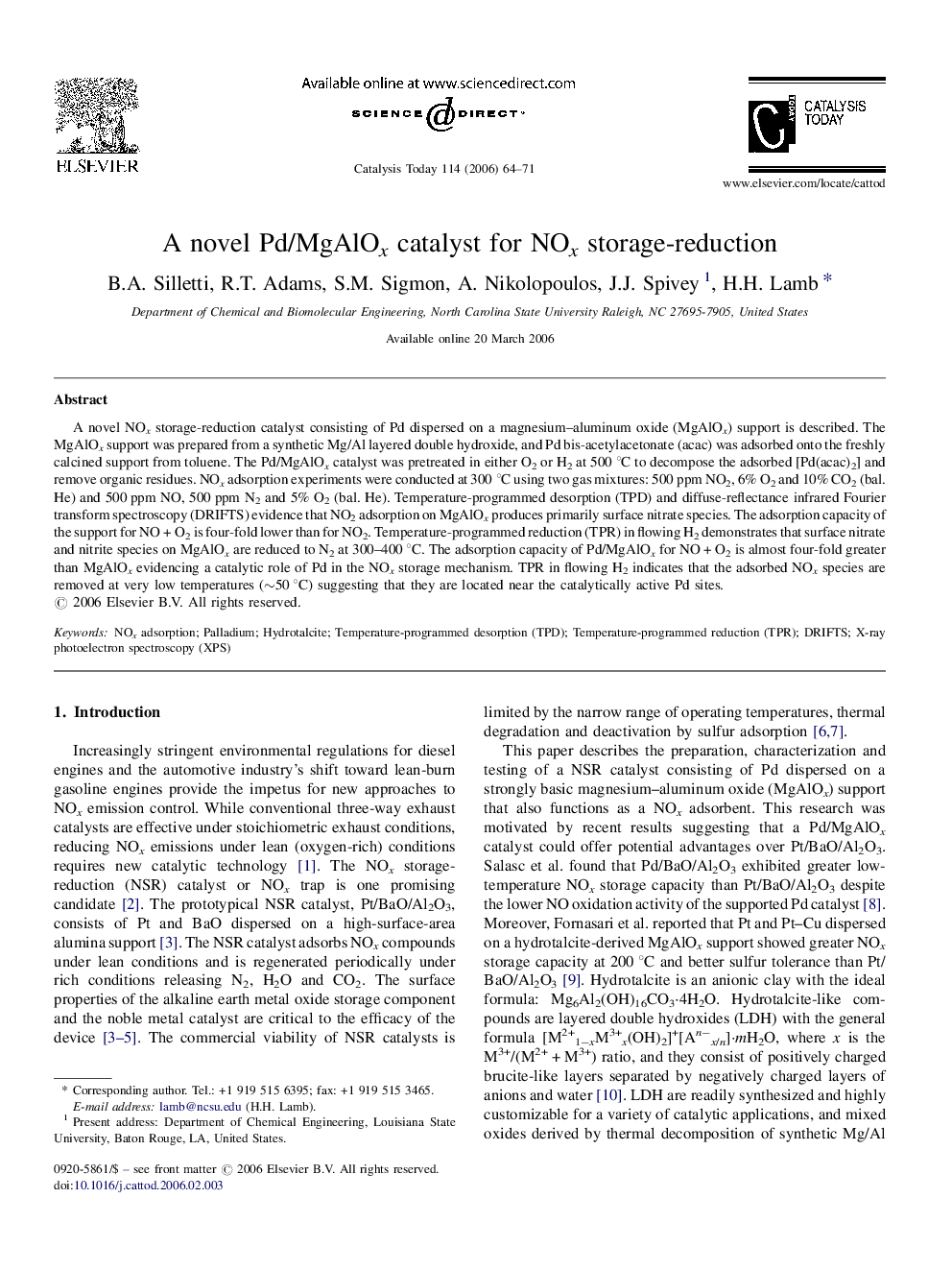| Article ID | Journal | Published Year | Pages | File Type |
|---|---|---|---|---|
| 58908 | Catalysis Today | 2006 | 8 Pages |
A novel NOx storage-reduction catalyst consisting of Pd dispersed on a magnesium–aluminum oxide (MgAlOx) support is described. The MgAlOx support was prepared from a synthetic Mg/Al layered double hydroxide, and Pd bis-acetylacetonate (acac) was adsorbed onto the freshly calcined support from toluene. The Pd/MgAlOx catalyst was pretreated in either O2 or H2 at 500 °C to decompose the adsorbed [Pd(acac)2] and remove organic residues. NOx adsorption experiments were conducted at 300 °C using two gas mixtures: 500 ppm NO2, 6% O2 and 10% CO2 (bal. He) and 500 ppm NO, 500 ppm N2 and 5% O2 (bal. He). Temperature-programmed desorption (TPD) and diffuse-reflectance infrared Fourier transform spectroscopy (DRIFTS) evidence that NO2 adsorption on MgAlOx produces primarily surface nitrate species. The adsorption capacity of the support for NO + O2 is four-fold lower than for NO2. Temperature-programmed reduction (TPR) in flowing H2 demonstrates that surface nitrate and nitrite species on MgAlOx are reduced to N2 at 300–400 °C. The adsorption capacity of Pd/MgAlOx for NO + O2 is almost four-fold greater than MgAlOx evidencing a catalytic role of Pd in the NOx storage mechanism. TPR in flowing H2 indicates that the adsorbed NOx species are removed at very low temperatures (∼50 °C) suggesting that they are located near the catalytically active Pd sites.
